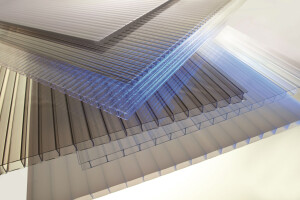White Oak Music Hall will reopen a converted warehouse space as Raven Tower Pavilion
SCHAUM/SHIEH, Houston and New Yorkbased architects, have designed a dynamic cluster of music venues in Houston consisting of The White Oak Music Hall, The Lawn, and Raven Tower Pavilion. The project is a sevenacre assemblage of new and adapted buildings, openair structures, landscaped areas, and paved and decked surfaces along the Little White Oak Bayou. Pieced together from one large main site and a collection of smaller lots, the project is a unique example of urban infill, feathered into the fabric of the neighborhood on both sides of the bayou floodway and offering views of the Houston skyline. Owned and operated by a diverse and local group of live music fans and professionals, the venues offer a new stateoftheart, transitoriented cultural hub for the Near Northside neighborhood and for the city.
White Oak Music Hall (WOMH) is the anchor of the project. Completed in 2017, the building houses two performance halls: WOMH Downstairs and WOMH Upstairs. With a 1200person capacity, WOMH Downstairs is the main hall and the heart of the building, containing two levels lined with cedar slats that are spaced to acoustically tune the room and provide pockets for ambient lighting. WOMH Upstairs' 200person capacity provides a more intimate setting for upandcoming acts. Windows behind the stage allow audience members to peek at the skyline while watching a show. Throughout the building, the material palette is matteroffact and elemental: steel bar, concrete bar, wood bar. The aesthetic is deliberately direct: the circulation is painted in immersive bright colors that pop in contrast to the dark performance and tech rooms and mark the different zones of the building. Like the industrial buildings that have traditionally housed rock and roll venues, the building is built for vigorous use; the materials selected and detailed to sturdily meet and wear with the rough handling expected.
The White Oak Lawn is a 3,800 capacity amphitheater that was sculpted to frame the landscape around the bayou and the skyline. Prevailing winds keep concertgoers cool even on hot summer nights. Balconies and a roof deck add a vertical orientation to the venue, and support an intimate audience experience.
Lastly, an existing metal warehouse and unique landmark steel tower were converted into the Raven Tower Pavilion, slated to reopen as a bar and small performance space in late February / early March 2018. Large arched openings were surgically sliced into the steel building to open it to natural ventilation and views. The existing 20ton steel crane became the proscenium to a small performance area. A decked patio along the bayou conceals a water detention pond, extending and integrating the performance space back into the laidback landscape.
Architect Troy Schaum elaborated on the new venues: "We designed the performance spaces to be tough in character and a little compressed in proportion. The rawness of the materials invites people to touch, to kick, and rub up against them. They are meant to used and to wear their use over time.” The architects emphasized the nesting scales within the project, from the intimacy of WOMH Upstairs to the modest grandeur of WOMH Downstairs, the main hall, culminating in The Lawn as an outdoor, urban living room for the city. Of the amphitheater, architect Rosalyne Shieh said: “When The Lawn is teeming during an outdoor show, the gray form of the Main Venue emerges from the banks of the bayou, hulking behind the crowd like a geologic object, facing, across the distance, the skyline of downtown Houston.”
Beyond contributing to the cultural life of Houston in an exceptional way, this cluster of venues keys into the expanded light rail at Quitman Street as well as the latest extension of the Houston Bayou Hike and Bike trail network. In a city defined by automobiles, White Oak Music Hall builds upon and encourages the use of public transit and bicycles.
















































